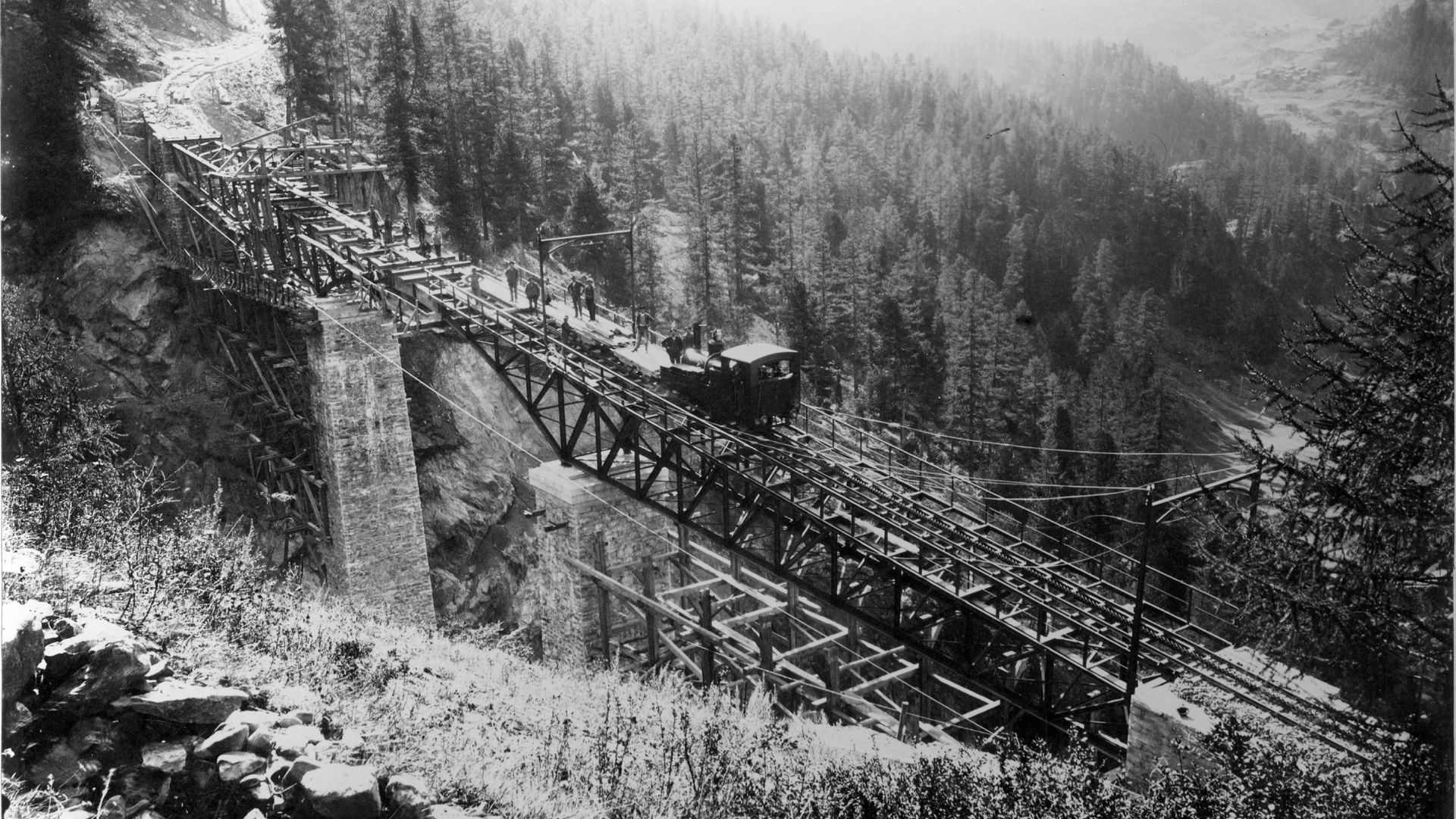Info point 2
The birth of the Gornergrat Railway
On 22 August 1890, before the actual opening of the Visp-Zermatt Railway, an application for a concession was submitted to the Federal Palace. The aim was to expand the Visp-Zermatt Railway with two mountain railways: one to the Gornergrat and one to the Matterhorn. However, before these plans could actually be implemented, Zermatt first had to be reached, which led to the application being time-barred. In a new application dated 10 June 1895, only the project for the Gornergrat was pursued. There was strong opposition to the construction of the Gornergrat Railway. The main reason for the opposition was the threat of competition for mountain guides and porters. The Federal Council countered these fears by pointing out that the same fears had proved to be groundless in the Bernese Oberland.
Work began in May 1896. Due to the altitude, the construction period between the snowmelt and the onset of winter was extremely short. Between 1896 and 1898, more than 1,000 workers were deployed at the same time – most of them Italians.
The most difficult part of the line construction was between Zermatt and Riffelalp. Shortly after Zermatt, the workers had to build a bridge over the village stream. The construction of the 90-metre-long bridge over the Findelbach Gorge proved much more difficult. Due to time constraints, the engineers dispensed with the planned stone arches. Instead, an iron truss bridge was constructed on pillars instead.
On 20 August 1898, the Gornergrat Railway was then put into operation as the first electric cog railway in Switzerland, reaching the Gornergrat at an altitude of 3,089 metres for the first time. The route, which goes from the valley station in Zermatt at 1,604 metres above sea level to the summit at 3,089 metres above sea level, spirals its way through a multitude of vegetation zones.
First, the cog railway winds its way beneath the tree line through the picturesque Swiss stone pine forests of Riffelalp. It then crosses Alpine meadows on the Riffelberg, where the characteristic Blacknose sheep graze in summer. The higher the train travels, the fewer the Alpine flowers with the terrain becoming more rocky. When the train reaches the top, it is surrounded by a world of glaciers and peaks over 4,000 metres high.

